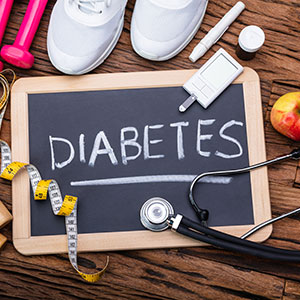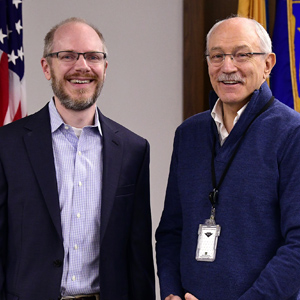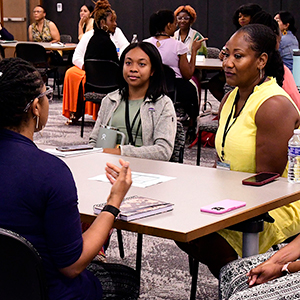 “When I was an inpatient,” Sieber said, “my boss at NIEHS told me, ‘Focus on getting well. We’re getting the lab ready for you.’” (Photo courtesy of Steve McCaw)
“When I was an inpatient,” Sieber said, “my boss at NIEHS told me, ‘Focus on getting well. We’re getting the lab ready for you.’” (Photo courtesy of Steve McCaw)NIEHS biologist Stella Sieber was joined by Nancy Payne, a Duke University Hospital nurse who specializes in limb loss care, as the featured guests at the NIEHS Diversity Speaker Series event Oct. 28. Their talk, “From Science to Advocacy,” was offered by the NIEHS Office of Science Education and Diversity in recognition of Disability Employment Awareness Month.
Four days earlier, Sieber was among the first to be recognized by the National Institutes of Health (NIH) with the new Champions and Allies of Disability Award, for her history of advocating for the disabled. A biologist in the Molecular Genomics Core Laboratory, Sieber has been at NIEHS since 1997.
Tragedy brought them together
In July 2001, Sieber had stopped to assist the driver of an overturned vehicle when her car was struck by another driver as she stood at the back of her car. Both her legs were severed above the knee.
While Sieber was still in the hospital, a couple of her friends called Payne. Payne had worked as the limb loss nurse in the Department of Advanced Practice Nursing since 2001, building on more than 20 years as a medical and surgical nurse. “There’s not a class to learn what I’ve learned over the years,” Payne said. In 2010, Payne formed the Duke Amputee Performance Clinic, with Jan Gwyer, Ph.D., and David Sickles.
Today, Payne is an active member of the Amputee Coalition and is well known and respected in the limb loss-limb difference (LL-LD) community. Sieber also travels around the country promoting limb loss awareness. “Nancy is the only nurse in the country who serves in the role of limb loss clinical nurse specialist,” said Sieber.
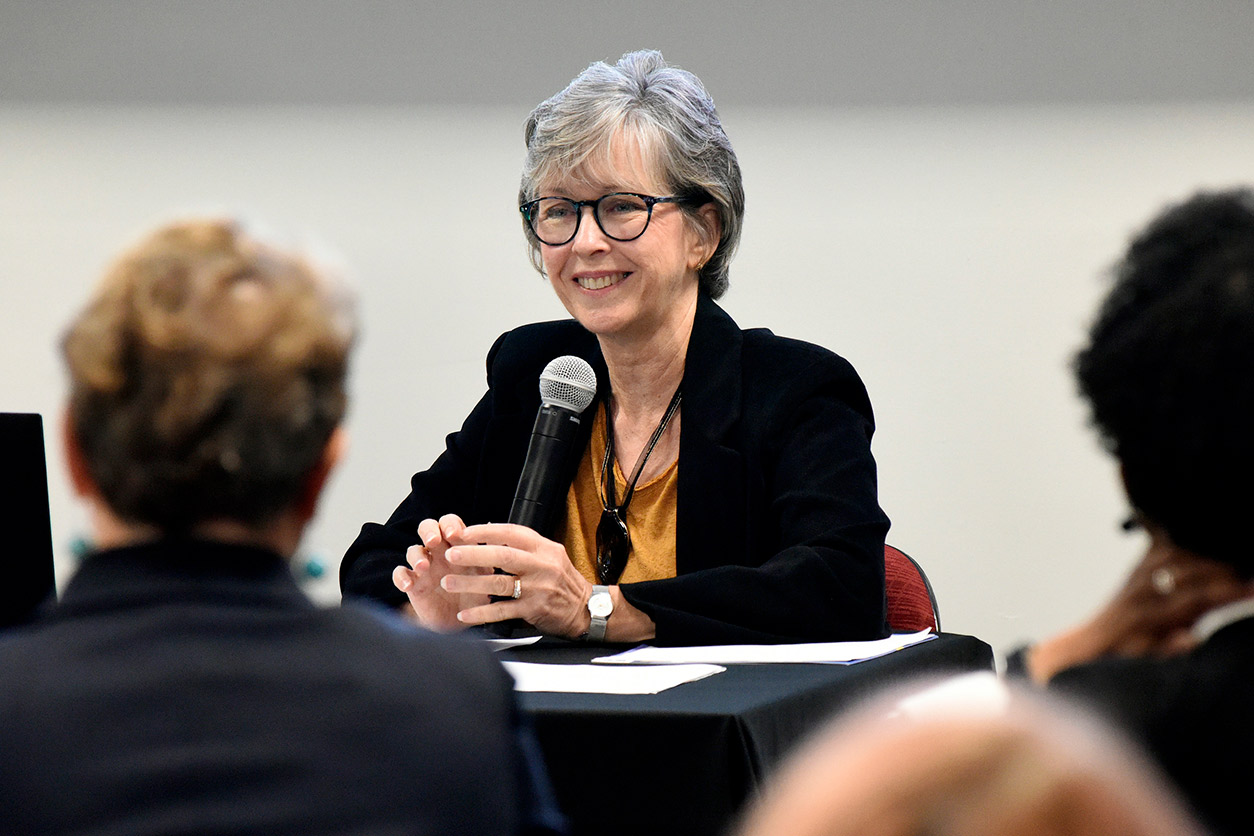 “Part of what our clinic does is provide the documentation our clients need to get the right prosthesis,” said Payne. (Photo courtesy of Steve McCaw)
“Part of what our clinic does is provide the documentation our clients need to get the right prosthesis,” said Payne. (Photo courtesy of Steve McCaw)Recovery challenges
Psychological recovery is as important as physical recovery, and to that end, peer-to-peer visits are a crucial tool. “It is as or even more important than what I do as a nurse,” said Payne.
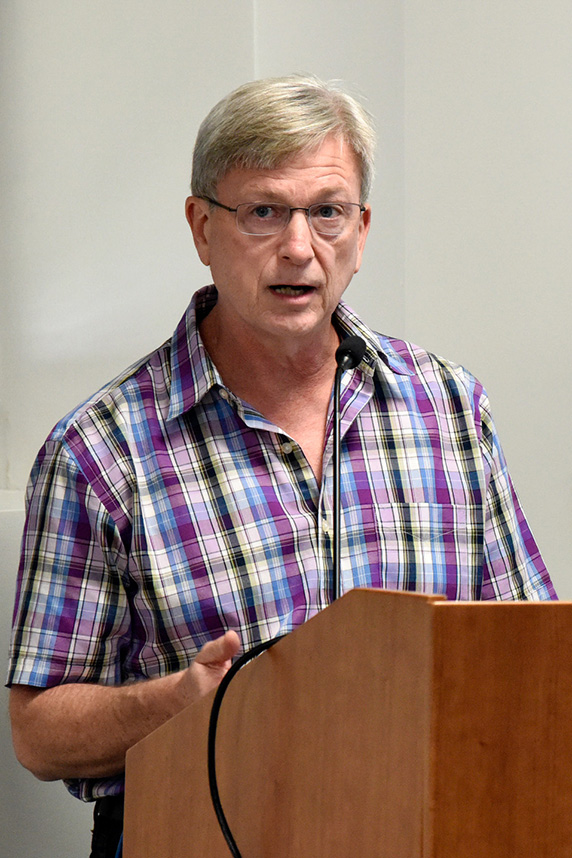 Kevin Gerrish, Ph.D., head of the Molecular Genomics Core Laboratory and Sieber’s boss, introduced the two speakers. (Photo courtesy of Steve McCaw)
Kevin Gerrish, Ph.D., head of the Molecular Genomics Core Laboratory and Sieber’s boss, introduced the two speakers. (Photo courtesy of Steve McCaw)A visit by Sieber helps a recent amputee to cope. “People with disabilities have insights on what’s best for us,” said Sieber. “The team approach to amputee rehabilitation leads to a more enlightened and successful healing. We should always be part of the medical team.”
Age is also important, said Payne. The younger an amputee, and the quicker they get into a prosthesis, the quicker they adjust. For teenagers, limb loss can be particularly challenging. “The older the patient, the more the body has to unlearn,” said Payne. “My goal is always to get them back to a high quality of living.”
Sieber also credits NIEHS management with aiding her successful recovery by accommodating her disability. “NIEHS and NIH are examples of how all workplaces should be.” Sieber noted that fewer than 5% of people with limb loss return to work.
Advocating for better care
There are only 12 orthotic and prosthetic graduate programs in the U.S., producing about 250 graduates a year, according to Sieber. By 2020, there will be about 7,500 certified orthotic and prosthetic providers to serve over two million people with limb loss — over 44,000 patients per practitioner in the U.S. “It’s a serious bottleneck,” said Sieber.
Better private insurance coverage for the LL-LD community is also a high priority. “Our goal is to get every insurance policy to at least be equal to Medicare coverage,” Sieber said, “and for Medicare to improve coverage for orthotics and prostheses.”
The goals of the NIEHS Diversity Speaker Series, which launched in February 2018, are to recognize and acknowledge the Special Emphasis Portfolios as designed by the NIH Office of Equity, Diversity, and Inclusion.
(John Yewell is a contract writer for the NIEHS Office of Communications and Public Liaison.)





